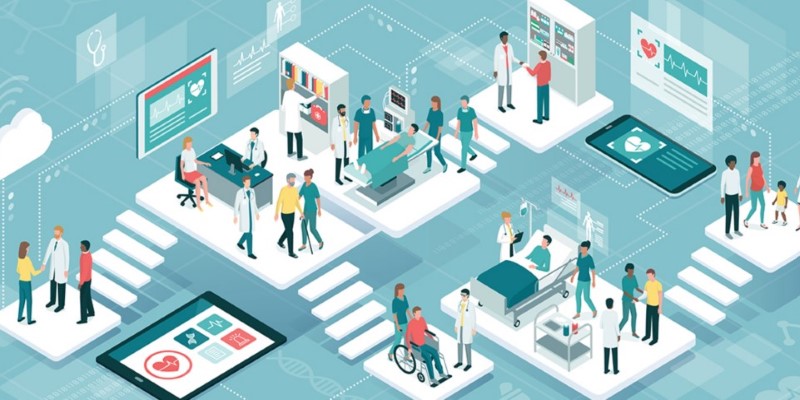- Electronics & Tech News
How Wearable Tech Is Changing Healthcare
Wearable technology has made significant strides in recent years, fundamentally transforming how we approach healthcare. From fitness trackers to smartwatches, these devices have become a part of daily life for many, providing insights into personal health that were previously difficult to obtain. In 2025, the impact of wearable tech on healthcare will continue to grow, offering new opportunities for monitoring, diagnosis, and treatment.
The Rise Of Wearable Devices
Wearable technology is defined as devices that can be worn on the body and are designed to collect data about the user’s health and fitness. Popular examples include smartwatches, fitness bands, heart rate monitors, and even smart clothing. The appeal of these devices lies in their ability to provide real-time data, making health monitoring accessible and convenient. As technology advances, these wearables are becoming more sophisticated, incorporating features that go beyond mere activity tracking.
The market for wearable technology has exploded, driven by increased consumer interest in health and wellness. Wearables will be not only more affordable but also more integrated into our everyday lives. Many people now view them as essential tools for maintaining their health. This shift is partly due to the increasing awareness of preventive healthcare, where individuals are more proactive about monitoring their health rather than waiting for symptoms to arise.
Real-Time Health Monitoring
One of the most significant benefits of wearable tech is its ability to provide real-time health monitoring. Devices like the Apple Watch or Fitbit can track heart rate, steps taken, calories burned, and even sleep patterns. This continuous monitoring empowers users to gain insights into their health, allowing for immediate adjustments to their lifestyle.

For instance, a person who notices an increase in their resting heart rate might choose to modify their exercise routine or consult a healthcare professional. This capability is particularly beneficial for individuals with chronic conditions, such as diabetes or heart disease, who require constant monitoring to manage their health effectively. Wearables can alert users to irregularities, prompting timely medical intervention.
Moreover, data collected by wearables can be shared with healthcare providers, enhancing the relationship between patients and doctors. This data-driven approach enables healthcare professionals to make more informed decisions about treatment plans, ultimately improving patient outcomes.
Chronic Disease Management
Wearable technology plays a crucial role in managing chronic diseases. Devices specifically designed for health conditions, like continuous glucose monitors for diabetes, are gaining traction. These devices provide users with real-time data about their blood sugar levels, enabling them to make immediate adjustments to their diet and insulin usage.

In 2025, the integration of wearables in chronic disease management will be increasingly commonplace. Many healthcare providers recommend specific devices to patients based on their individual health needs. This tailored approach ensures that patients receive the most effective monitoring tools to help manage their conditions.
Additionally, remote monitoring through wearable devices allows for better management of chronic diseases. Patients can stay in touch with their healthcare teams without needing frequent in-person visits. This not only saves time but also reduces healthcare costs, as patients can receive necessary care without the logistical challenges associated with traditional appointments.
Mental Health And Wellbeing
The impact of wearable technology on mental health is also becoming more pronounced. Many devices include features that monitor stress levels, sleep quality, and overall mood. For example, some wearables use heart rate variability to gauge stress, providing users with insights into their mental wellbeing.

In 2025, the recognition of the connection between physical health and mental health is leading to a more holistic approach to healthcare. Wearables that track both physical activity and mental health indicators can provide users with a comprehensive view of their overall wellbeing. This information can be invaluable for individuals seeking to manage stress, anxiety, or depression.
Moreover, mental health apps paired with wearables can offer mindfulness exercises, guided breathing techniques, and other resources to help users manage their mental health in real-time. The convenience of accessing these tools through a wearable device can encourage users to adopt healthier habits and improve their mental well-being.
Personalized Health Insights
As wearable technology continues to evolve, personalized health insights are becoming a reality. Many devices now leverage artificial intelligence and machine learning algorithms to analyze data and provide tailored recommendations. For instance, some wearables can suggest personalized workout plans based on individual fitness levels and health goals.

In 2025, this personalization will enhance user engagement with their health. When individuals receive recommendations based on their unique data, they are more likely to adhere to suggested lifestyle changes. This personalized approach not only improves user experience but also contributes to better health outcomes.
The ability to track health metrics over time allows for trend analysis, helping users and healthcare providers identify patterns and make informed decisions. For example, suppose a user consistently sees a decrease in physical activity during a particular season. In that case, they can adjust their routine to address this trend, ensuring they stay active year-round.
Integration With Healthcare Systems
Another significant development in 2025 is the integration of wearable technology with healthcare systems. Many healthcare providers are beginning to recognize the value of the data generated by wearables. Some hospitals and clinics are implementing systems that allow for the seamless sharing of data between patients and their healthcare teams.

This integration can lead to more proactive care, as healthcare professionals can monitor patients’ health remotely and intervene when necessary. For instance, if a wearable device detects a significant change in a patient’s vital signs, it can automatically alert the healthcare provider, allowing for timely intervention before a potential health crisis.
Furthermore, the data collected from wearables can contribute to research and public health initiatives. Anonymized data from large groups can help identify trends and inform public health strategies, ultimately benefiting society as a whole.
Conclusion
Wearable technology is undeniably changing the landscape of healthcare. With real-time health monitoring, personalized insights, and improved chronic disease management, these devices empower individuals to take charge of their health. As we move forward into 2025 and beyond, the integration of wearables into healthcare systems promises to enhance patient care and drive better health outcomes.
While challenges remain, wearable technology has the potential to revolutionize healthcare. As we embrace this technological advancement, it's essential to prioritize user education, data security, and accuracy to fully harness its benefits. With the right approach, wearable technology can continue to improve lives, making healthcare more accessible and proactive than ever before.





